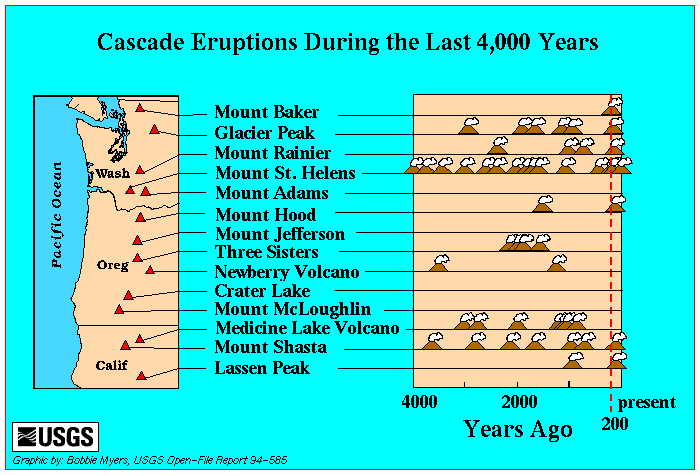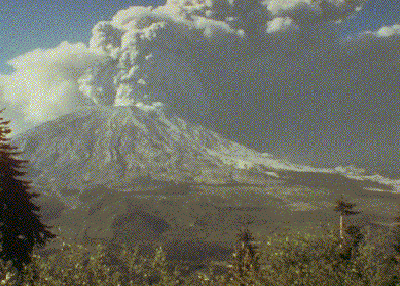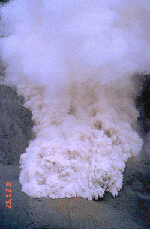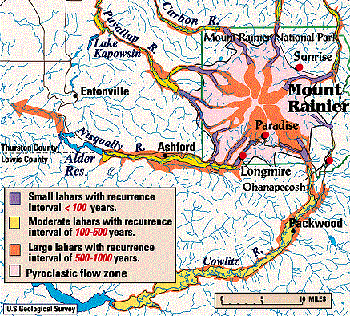
Hazards Associated
With
An Eruption
Based on type of volcano and the amount of time since its last eruption, Mount Rainier has a good chance of erupting in the near future. However, it is important to note that presently there is no dramatic increase in activity to indicate an eruption is near. Cascade eruptions have occurred on an average of 1 to 2 per century over the last 4,000 years. Geologic evidence shows that the last eruption of Mount Rainier was as recent as the 1840's and that larger volcanic eruptions took place 1,000 to 2,300 years ago.

As with other stratovolcanoes, Mount Rainier will erupt violently, releasing long built up pressure. Some of the major types of hazards that will company an eruption of Mount Rainier are: tephra fall, lava flow, and pyroclastic flow.
Tephra, a term for ash, is small rock like fragments that are ejected from a volcano into the atmosphere, which is then deposited around and downwind of the volcano. Tephra can be harmful to people in many ways. Small amounts can cause or aggravate respiratory problems in humans. It kills crops, damages machinery, and is a hazard to aviators. Another factor is , tephra is heavy and an accumulation of about 4 inches on roof tops could collapse those structures.
Tephra fall from Mount St. Helens

Lava Flow, is an outpouring of hot molten magma onto the surface of a volcano. Lava flow from a stratovolcano such as Mount Rainier is typically thick and slow moving. People and animals can generally escape a lava flow of this nature unharmed. However, the lava will burn and/or bury everything in its path.
Pyroclastic Flow, is composed mainly of volcanic rock and dense ash material and is ejected from an erupting volcano. In contrast to the slow moving lava flow, pyroclastic flows can move at speeds up to 200 miles per hour. The result of this is, a tremendous amount of rock traveling down steep slopes at great speeds. Any humans caught in the path of a pyroclastic flow would not live to talk about it.


Pyroclastic flow from Mount Pinatubo.